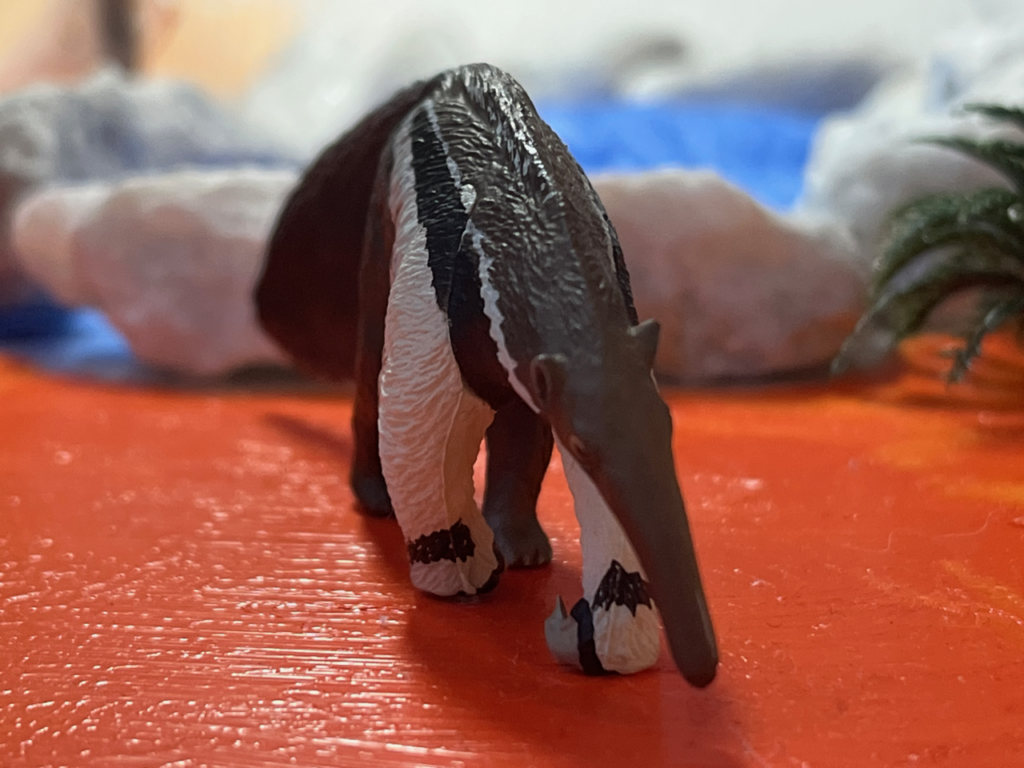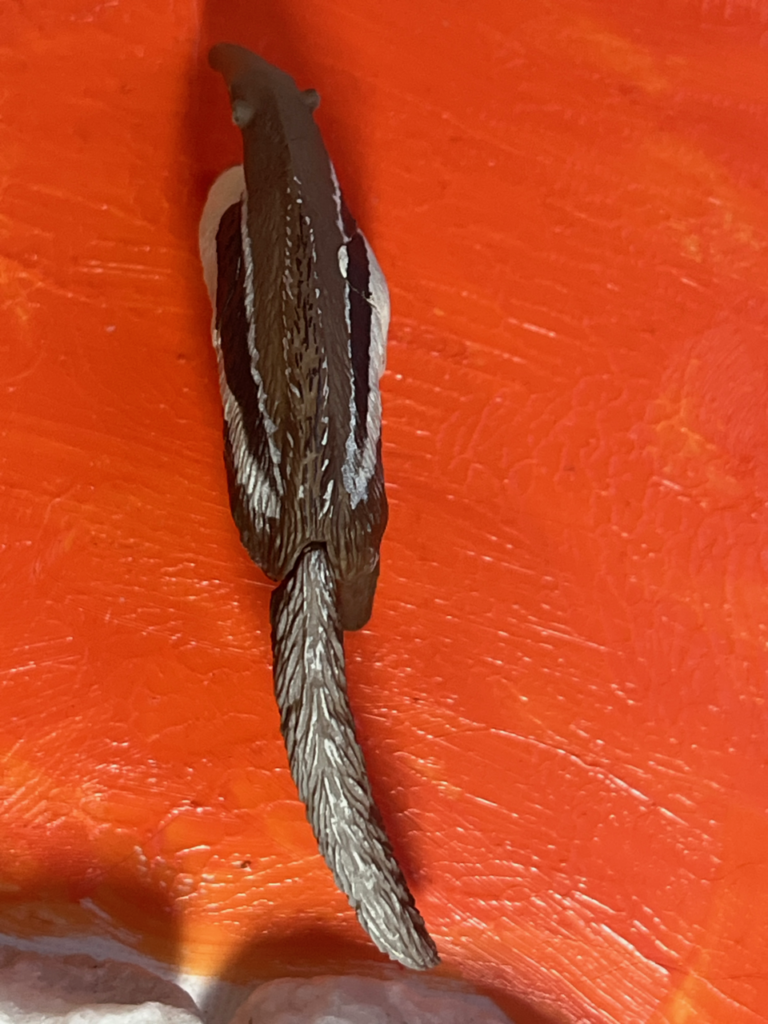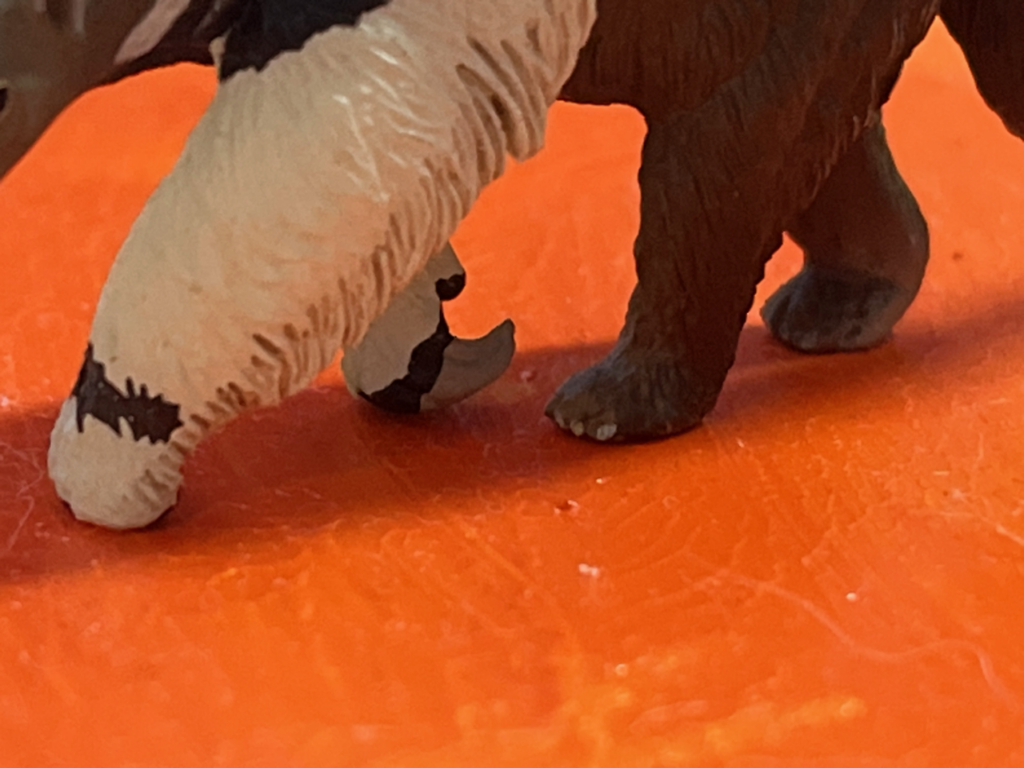Review and images by Sam; edited by bmathison1972
The giant anteater (Myrmecophaga tridactyla) is an animal of unusual proportions. These insectivorous mammals are native to the tropical rainforests and grasslands of Central and South America, and in Brazil, they are known as tamanduá-bandeira, which translates to “flag anteater,” a reference to their big, fanlike tail. They are classified as part of the superorder Xenarthra, making it closely related to the sloth and the armadillo. The giant anteater has a sticky, two-foot-long tongue that can lap up to 30,000 termites per day, and formidable, four-inch claws that are used to dig into termite mounds and fend off predators such as jaguars and pumas. These animals are listed as “Vulnerable” on the IUCN Red List, and habitat destruction for agriculture, hunting, and highways built through their habitats pose a threat to the species.
In 2018, Kaiyodo released their now-discontinued “Wild Rush” line, which covered four continents including Africa, South America, the Sub-Arctic, and Asia. This line consisted of highly-detailed replicas representing animals from those regions. As part of the line’s South America series, a giant anteater was released along with a black caiman, a capybara, a hyacinth macaw, and a jaguar. I received the giant anteater as an early Christmas gift from my aunt, and she will be the subject of today’s review. I named my anteater “Duda,” after the anteater character from the Brazilian cartoon Tromba Trem, and she will be referred to as such throughout the review.

I thought CollectA’s giant anteater, which I also own, was the best representation of the species, but I was wrong. Duda may be a very small figure, as most Kaiyodo figures are, but she is packed with a lot of attention-to-detail, and is arguably the most anatomically correct anteater figure.
Duda is sculpted to look as if she is walking along in search of tasty ants and termites to eat. She is painted in a dark brown color, and has a lot of fur detailing to mimic the shaggy coat of a real anteater.

Duda has a long, tapered snout, with some detailing. Her eyes are black, and surrounded by a pale golden ring. While not entirely visible, her nostrils and mouth are sculpted at the tip of her snout. Her ears are the correct size and shape and are positioned correctly.

Along the sides of her body is that distinctive, black-and-white stripe, that runs from just under her ear to her tail. A mane, with some white accenting, runs along her spine.

Duda’s tail is big and voluminous, much like that of a real giant anteater. In the wild, the tail is used as a blanket that they cover themselves with as they are sleeping. Her tail actually came as a separate piece and had to be placed onto her body.

Duda’s front legs are white, with a black stripe painted just above her feet. They are sculpted to mimic the shaggy fur of a real anteater. A feature that really draws me to this specimen is that she actually has long, curved claws sculpted onto her front feet, whereas most other anteater figures do not have that, most likely for safety purposes. Duda’s back feet are correctly shaped, and there are five toes on each foot, which is the correct number. The tip of each toe is painted white to represent her back claws.
Overall, Duda is arguably the best representation of this species in my opinion. Her extreme attention-to-detail and anatomical accuracy would make her a perfect fit for any diorama or animal toy figure collection. As I have mentioned earlier in this review, this figure is now discontinued, but some remaining stock can still be found on websites such as eBay. That being said, I am very lucky to own this model and have the chance to appreciate her beauty, and this figure is now my favorite animal toy figure that I own.
Disclaimer: links to Ebay and Amazon on the AnimalToyBlog are affiliate links, so we make a small commission if you use them. Thanks for supporting us!



